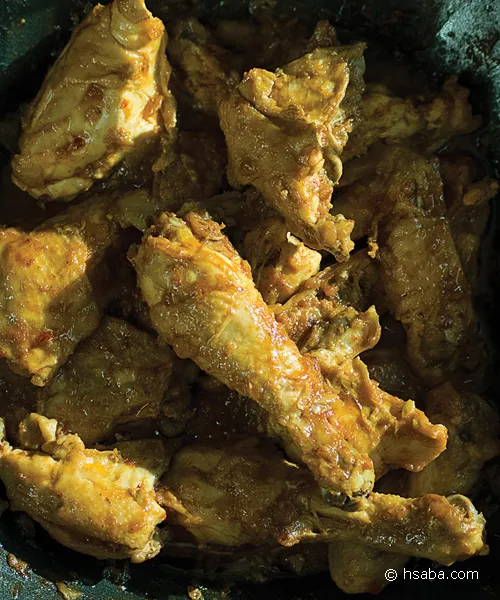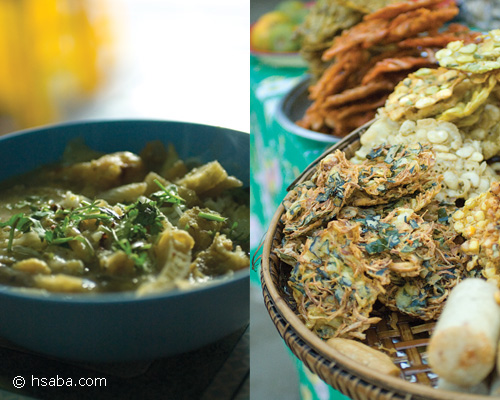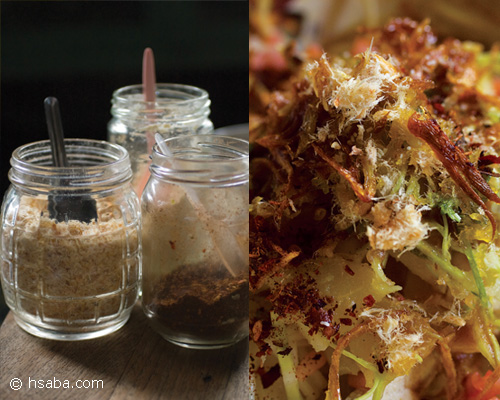Recipe
Guest Post: Burmese Chicken Curry
Prep Time:
Cook Time:
Yield:
4-6 persons

I am delighted to have Cho from hsa*ba as a guest on my blog. Cho was born in Burma but moved to England with her family at the age of 8. She returned to Burma in 2004 to rediscover the food of her childhood. Her first cookbook, hsa*ba, which is packed with simple authentic Burmese recipes was published in October 2008.
Today, Cho is going to tell us a little about Burmese food and will share with us a recipe in her cookbook. Let’s don’t waste anytime, please welcome Cho!
I was thrilled when Leemei asked me to talk about a Burmese dish. The difficulty has been to choose one dish. Similar to most Asian countries, a Burmese meal consists of several small dishes: a meat curry, a fish dish, a vegetable dish and a salad. All these are eaten with lots of rice and washed down with small bowls of soup.
There are a couple of one-dish meals I think are quite unique to Burmese: the traditional fish noodles soup called mo-hin-gar is eaten for breakfast, lunch and dinner. When I was back in Burma a few years ago, the distinct smell of this fish soup was almost on every street corner of Yangon.

Mohingar is a thick soup made with catfish and banana stem, eaten with rice noodles. My favourite are the garnishes: crunchy pea fritters, deep-fried bottle gourd in crispy batter, slices of boiled egg, fresh coriander, extra fish sauce and lime juice to adjust the soup to your taste. I do like my food ‘chin chin, ngan ngan, sut sut’ which translate as sour, salty and spicy.
Another quintessentially Burmese dish is ‘let thote’ or hand-mixed noodle salad. It is exactly what it says, you mix the salad with your fingers. It is served with all the individual ingredients laid out on the table (can be elaborate depending on occasion). The fun of eating this salad is making it yourself: mashing the potatoes, feeling the textures of different noodles, crunchiness of the cabbage then adjusting the garnishes and sauces until it hit the spot! This is a hearty salad and great fun for a dinner party. I think there’s something wonderful and sensual about eating with your hand.

After much thought I have chosen a favourite recipe, an absolute staple in our home, chicken curry or sipyan. Sipyan in Burmese means ‘oil returns’, a perfect description of the gravy or sauce when the dish is ready. Although a curry, there are little in the way of spices and ingredients used yet it is intensely aromatic and robust in flavour. This is what I love about Burmese cooking, uncomplicated and fuss-free.
To start with, I always buy a good whole chicken and keep the meat on the bone. It gives the curry so much more flavour. It is important to pound the onions, garlic and chillies in a pestle and mortar. It seem to make a difference to the gravy and have patience to slowly caramelise the paste. That’s the secrete of this dish!
This basic curry recipe is a great dish to learn as it is the base for a number of other dishes such as Coconut noodles soup, similar to a Laska or tossed with noodles, sliced shallots, shredded cabbage and coriander into a delicious salad. I tend to make a large batch, some to be eaten straigh away, the rest kept in the freezer until needed.
Chicken Curry (Kyet Thar Sipyan)
Prep Time:
Cook Time:
Yield:
4-6 persons
Ingredients:
For the Chicken Curry (Kyet Thar Sipyan):
½ teaspoon ground turmeric
½ teaspoon salt
3 tablespoons fish sauce
1 whole chicken, jointed into 8 pieces
2 medium onions, thinly sliced
4 garlic cloves, crushed
1 teaspoon crushed dried chillies
125ml peanut oil
½ teaspoon paprika
500ml water
Method:
1. Mix the ground turmeric, salt and fish sauce in a bowl. Add the chicken and toss in the marinade. Leave for 30 minutes while you make the onion paste.
2. Put the onion, garlic and dried chillies in a pestle and mortar. Pound to a coarse paste. It definitely makes a difference to the taste of the gravy if you use a pestle and mortar. If you don’t have one, just chop everything finely.
3. In a wok or saucepan, heat the oil. Cook the onion paste over moderate heat for 15-20 minutes. It may seem like a lot of oil but it’s important not to skimp here. If there is not enough oil, it will burn the onions and make the gravy bitter. Keep a close eye and stir frequently. When the mixture has caramelised and turned reddish brown, add the paprika and stir until fragrant.
4. Finally add the chicken and water, cover and simmer for 45-60 minutes, occasionally stirring the mixture until the meat is tender. It is ready when the gravy has reduced and the oil has returned.
Tip: To make the gravy a little bit more substantial, add 4 fresh or a tin of tomatoes along with the water.

